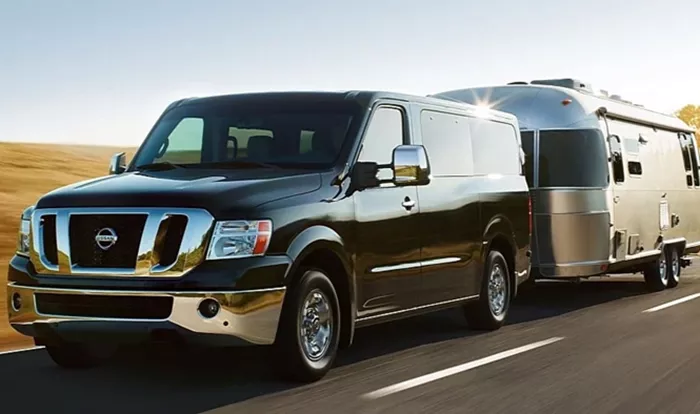When Nissan discontinued its NV-series full-size van in 2021, it highlighted the difficulties of competing in the van market, especially for newcomers. The NV had many of the same qualities as established players like the Chevy Express and Ford Econoline. In some cases, it even outperformed them. But despite its strengths, the NV couldn’t overcome Nissan’s internal struggles and the broader challenges of the van market. Let’s dive into the highlights and low points of the Nissan NV’s journey.
A Brief History of Nissan’s Van Efforts
Nissan’s venture into the North American van market was limited before the NV. In 1986, they introduced the Nissan Vanette (known as the Van in the U.S.), a compact van aimed at competing with the likes of the Renault Espace and Dodge Caravan. While the Vanette featured enhancements like a larger 2.4-liter engine and air conditioning, it never gained significant traction in the market.
Nissan’s first major minivan effort, the Nissan Quest, debuted in 1993 after collaborating with Ford. Although the Quest ran for four generations, it struggled to match up to competitors like the Toyota Sienna and Honda Odyssey, leaving Nissan with minimal presence in the minivan segment. In the years that followed, Nissan introduced the Axxess, a small quasi-microvan, but it hardly made an impact.
The NV Series: A Serious Attempt at Full-Size Vans
Unlike their previous efforts, the Nissan NV was designed as a direct competitor to the Chevy Express and Ford Econoline—both of which were heavy hitters in the full-size van market. The NV was available in various configurations, including the NV1500, NV2500, and NV3500, offering a range of payload capacities and engine options.
The NV1500, for example, had a solid 2,590-pound payload capacity. It was powered by a 4.0-liter V6 engine with 261 horsepower, capable of towing up to 7,000 pounds. It was available in a bare-bones work van spec or a more feature-rich SV trim, which included power windows, locks, and optional all-wheel drive (AWD).
Engine Options and Performance
One of the NV’s standout features was its choice of engines. The NV1500 came with the 4.0-liter VQ40 V6, which shared its engine block with Nissan’s Z-series sports cars, the 350Z and 370Z. Meanwhile, the NV2500 came with the option of a 5.6-liter V8 engine, generating 310 horsepower and 381 lb-ft of torque, an equivalent to what was found in the Nissan Titan truck.
The NV3500 was the most powerful variant, offering up to 9,400 pounds of towing capacity. It could also be configured to carry up to 12 passengers in addition to its cargo, making it versatile for both work and personal use. Despite these strong specifications, the NV was always overshadowed by its competitors.
The Unfortunate Timing
When the NV launched, it entered a market already dominated by GM’s Chevy Express and Ford’s Econoline, both of which had years of brand loyalty and a well-established reputation. While the NV made a respectable showing—selling over 140,000 units in the U.S. between its 2013 debut and 2021—GM sold more than half a million Chevy Express vans during that same period.
However, the sales gap isn’t entirely due to competition. Nissan was in the midst of a turbulent period. The company’s reputation was suffering due to quality issues, particularly with the CVTs found in models like the Sentra and Pathfinder. This left potential customers wary of investing in a van that would be relied upon for work.
Internal Turmoil: The Ghosn Era
Nissan’s leadership during the NV’s run was unstable, and the company’s future was uncertain. Carlos Ghosn, the former CEO, faced serious legal issues, and rumors of a corporate buyout by Honda circulated. The uncertainty surrounding Nissan’s future did nothing to help the NV’s public image, especially for businesses that relied on their vehicles to make a living.
As Nissan grappled with its internal turmoil, the NV faced a tough market. While its design was solid and its capabilities strong, it never gained the traction it needed to challenge the longstanding dominance of Ford and GM.
The End of the NV Era
Ultimately, Nissan made the decision to focus on its “Business Advantage” program, which shifts more of its vehicles to fleet sales. With that shift, it seems unlikely that Nissan will return to the full-size van market in the near future.
The NV’s failure to secure a larger share of the market is unfortunate, especially since competition in this segment is now almost a monopoly. The NV had all the right ingredients for success, but Nissan’s internal struggles and market timing left it a contender without a championship.
In conclusion, the NV was a capable and competitive van, but its timing and the company’s internal instability doomed its chances for lasting success. As Nissan enters a new era, it would benefit from remembering the few highlights from this period and learning from its past missteps.

